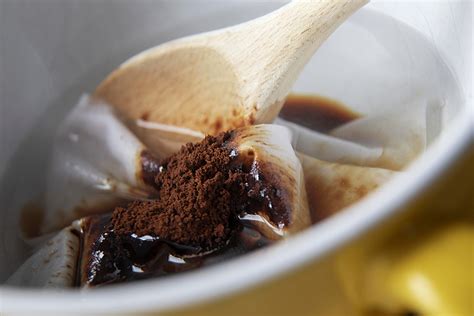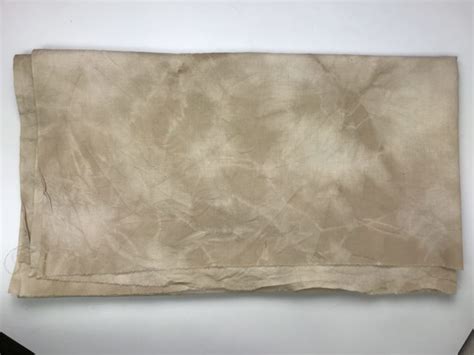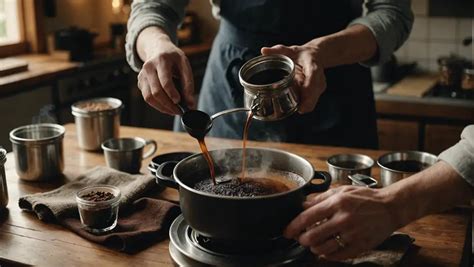Learn how to coffee dye or tea dye fabric at home with this complete DIY guide. Explore eco-friendly, natural dyeing methods using tea or coffee.
Are you fascinated by vintage aesthetics, sustainable fashion, or simply seeking a creative way to upcycle old fabrics? Welcome to the world of coffee dyeing and tea dyeing — natural, eco-friendly dye methods that have been used for centuries and are making a stylish comeback in modern DIY culture. Whether you’re looking to add a warm, aged tone to paper, clothing, or textiles, this guide will walk you through how to coffee dye or tea dye effectively using items you already have in your kitchen.
“Color is a power which directly influences the soul.” — Wassily Kandinsky

What Is Coffee and Tea Dyeing? (Intro to Natural Dyeing)
Coffee and tea dyeing are traditional techniques for coloring natural fabrics like cotton, linen, muslin, and even paper. Unlike synthetic dyes, these natural methods are non-toxic, biodegradable, and deeply rooted in cultural practices. Historical records show that even as far back as the Tang Dynasty in China and Victorian England, people were using tea stains to color garments and create antique effects.
Today, with growing awareness of eco-conscious crafting, these techniques have found a new audience. Sustainable textile designers, artists, and even educators are turning to tea and coffee as natural dyeing agents due to their accessibility, safety, and beautiful, earthy hues.
See more: Best Arabica Coffee Beans for Home Brewing (Expert Picks)
How to Coffee Dye or Tea Dye: Step-by-Step Instructions

Dyeing with tea or coffee is both an art and a science. Below is a step-by-step guide for dyeing fabric or paper at home, organized to be accessible for beginners but rich in detail for seasoned crafters.
Materials You’ll Need
Here’s what you’ll want to prepare before you begin:
- Natural fabric (cotton, muslin, linen, silk — synthetic fabrics don’t absorb natural dyes well)
- Used or fresh tea bags (black tea works best) or ground coffee (stronger brew = deeper color)
- Large stainless steel or enamel pot
- Tongs or gloves (to avoid staining your hands)
- Large plastic basin or sink for soaking
- Spoon or stirrer
- Fixative (optional: white vinegar or salt depending on the material)
- Drying rack or clothesline
💡 Expert Tip: Always use non-reactive containers (no aluminum) to avoid chemical reactions that can alter the dye color.
Preparing the Fabric
Before dyeing, wash your fabric thoroughly to remove any residues or finishes that might resist dye. For best results:
- Use unscented, natural detergent.
- Boil fabric in water for 30 minutes if it’s new or stiff.
- Do not use fabric softener.
“Prepping the canvas is half the art.” Fabric preparation determines the evenness and intensity of the final dye.
Making the Coffee or Tea Dye
Here’s where the magic begins — brewing your dye solution.
Tea Dye:
- Bring 2 liters of water to a boil.
- Add 10–12 black tea bags (or 5 green/rooibos for lighter tones).
- Simmer for 15–20 minutes for strong color.
Remove tea bags and allow the liquid to cool slightly.
Coffee Dye:
- Brew very strong coffee using a French press or drip machine (or reuse old grounds).
For deeper color, use espresso powder or boil brewed coffee to reduce it.
🧪 Science Note: Tea contains tannins, natural compounds that act as mordants, helping the dye stick to fibers — making tea dye slightly more colorfast than coffee.
Dyeing Process

Now to immerse your fabric in your freshly brewed dye bath:
- Submerge fabric into the dye solution while it’s still warm.
- Let it soak for 20 minutes to 1 hour depending on the desired shade.
- Stir occasionally for an even tone.
For ombre effects, dip only parts of the fabric or adjust timing for different sections.
Pro Color Chart:
| Time in Dye | Tea Dye (Color) | Coffee Dye (Color) |
|---|---|---|
| 5 mins | Pale Beige | Light Tan |
| 30 mins | Warm Brown | Rustic Earth |
| 1 hour | Rich Chestnut | Deep Mocha |
“Dyeing is less about following rules and more about experimenting with time, texture, and material.” — Textile Artist Yumi Okuda
Rinsing, Drying, and Setting the Color
Once you’ve reached the desired shade:
- Rinse fabric gently in cold water until it runs clear.
Prepare a fixative bath:
For tea-dyed fabric: 1 part vinegar to 4 parts water.
For coffee-dyed fabric: Add 1 tablespoon of salt per liter of water.
- Soak the fabric for 15–20 minutes.
Air dry the fabric out of direct sunlight to prevent fading.
🌱 Sustainability Tip: Reuse your leftover dye solution up to two more times for lighter shades or paper dyeing.
Tips for Achieving the Best Results
Getting the perfect vintage tone takes a mix of patience, practice, and material knowledge. Here are pro tips from experienced artisans and designers:
Choosing the Right Fabric
- Natural fibers absorb dye far better than synthetics.
- Cotton muslin gives an even tone.
- Silk or wool can result in richer hues but require gentler handling.
Avoid polyester blends, which resist natural dyes almost entirely.
Adjusting Color Intensity
- The longer the fabric stays in the dye bath, the deeper the tone.
- Repeated dyeing (layering) creates more dimensional color.
- Adding iron (rusty nails in water) to the dye can shift tones from brown to grey-black (used in traditional Korean dyeing).
Avoiding Common Mistakes
“Mistakes are the portals of discovery.” — James Joyce
But some pitfalls are best avoided:
- Don’t skip pre-washing. Oils and dirt repel dye.
- Avoid uneven submersion — fold and stir consistently.
- Never squeeze fabric too hard after dyeing; it causes blotchy patches.
Don’t dry in direct sunlight — this leads to quick fading.
Coffee Dye vs. Tea Dye: Which One Is Better?
Let’s explore the key differences between these two beloved natural dyes to help you decide which is best for your project.
Color Differences
| Dye Source | Tone Produced | Notes |
|---|---|---|
| Tea | Yellow-Brown to Sepia | Softer, slightly warmer tones |
| Coffee | Mocha to Deep Brown | Richer, darker result |
Tea tends to yield more golden, muted results, while coffee produces deeper, earthier shades.
Longevity and Fade Resistance
- Tea dyeing tends to be more colorfast, thanks to its high tannin content.
- Coffee dye, while visually richer at first, can fade faster without a good fixative.
Sustainability and Scent
- Both dyes are 100% biodegradable and great for zero-waste crafting.
- Tea leaves a mild herbal scent, while coffee leaves a faint roasted aroma.
“The scent of tea-dyed fabric brings back memories of my grandmother’s linen closet — warmth, care, and nostalgia.” — DIY Blogger Emma Grace
Creative Ideas Using Coffee or Tea Dyed Fabric
Once you’ve mastered the coffee dyeing or tea dyeing process, the creative possibilities are endless. At Lyoncafe, where craftsmanship and sustainability meet, we’ve explored countless applications of this natural dyeing technique across design, art, fashion, and education. Here are some of the most inspiring ways to repurpose dyed materials into meaningful projects that reflect both eco-awareness and artistic flair.
1. Vintage-Style Home Décor
The muted, earthy hues created by tea and coffee dyes lend themselves perfectly to boho and vintage-inspired home décor. Try these ideas:
- DIY Throw Pillow Covers – Use tea-dyed muslin for a rustic, antique feel, and add lace or embroidered borders.
- Curtains and Tablecloths – Coffee-dyed cotton linen creates a farmhouse aesthetic that looks curated yet relaxed.
- Wall Hangings – Combine dyed fabric scraps with driftwood or bamboo rods for minimalist textile art.
“Natural tones calm the space. When we decorate with earth-colored elements, we invite balance.” — Interior Designer Vera Ling
At Lyoncafe Creative Studio, we incorporated tea-dyed silk banners for an in-store art installation, reflecting our café’s roots in nature and traditional craft.
2. Eco-Friendly Clothing Projects
Why buy fast fashion when you can revamp your wardrobe using natural dyes?
- Upcycled Shirts or Dresses – Tea dye over light cotton or linen adds a soft, vintage patina. Tie-dye techniques create a marbled effect.
- Natural Baby Clothes – Parents love using tea and coffee dyes for organic cotton baby garments to avoid harsh chemicals.
- Tunic or Robe Projects – For those in design school or running a slow fashion brand, using tea or coffee as natural dyes for prototyping provides texture and authenticity.
At mtnlyoncafe.com, we support independent designers using sustainable dyeing practices in their collections. The rise of “wear your values” is a movement we proudly align with.
3. Craft Projects and Art Paper

Artists and crafters find incredible utility in using coffee or tea to stain paper, canvas, or journals. Try these:
- Junk Journals and Vintage Paper – Soak A4 paper in tea for a classic aged look. Add handwritten notes with calligraphy ink.
- Scrapbooking – Use coffee-stained doilies and fabric to enhance the tactile experience of memory-keeping.
- Mixed Media Art – Combine dyed canvas with charcoal, thread, and dried plants for an earthy, avant-garde piece.
🎨 Case Study: Local Vietnamese artist Nguyễn Văn Phú exhibited a full installation titled “Cà Phê và Thời Gian” (Coffee and Time), in which every canvas was steeped in coffee stains to explore memory, nostalgia, and heritage.
Is Coffee/Tea Dyeing Permanent? Care and Maintenance
A common question we get from DIYers and textile enthusiasts is: How long will the dye last?
The answer depends on how you set, store, and care for the dyed fabric.
Washing Instructions
- Hand wash in cold water using a mild, pH-neutral detergent.
- Avoid bleach, harsh sunlight, and high-heat dryers.
Let fabric air dry away from direct sunlight to retain the richness of the natural hue.
“Think of tea and coffee dye like a fine wine — it matures beautifully with care but is delicate by nature.” — Lyoncafe Textile Specialist
Re-Dyeing Tips
- For faded items, simply repeat the dyeing process. Each round deepens the tone.
Want to layer new color? Tea over coffee creates rich golden mocha shades, while coffee over green tea adds earthy complexity.
| Fabric Type | Lifespan with Proper Care | Re-dye Recommendation |
|---|---|---|
| Cotton | 1–2 years | Every 8–12 months |
| Silk | 2–3 years | Optional |
| Paper | Permanent (with sealant) | Not needed |
FAQs About Coffee and Tea Dyeing
Can you dye synthetic fabric with tea or coffee?
Unfortunately, synthetic fabrics like polyester or acrylic don’t absorb natural dyes effectively. You may see a slight tint, but it will fade rapidly. Always use natural fibers for best results.
How long should fabric sit in the dye?
- For light tones: 15–30 minutes
- For medium shades: 30–60 minutes
For deep hues: up to 2 hours or overnight for extreme results
“Time is the dye’s best friend. Let it brew like your morning ritual — with intention.” — Lyoncafe Founder
Can you mix coffee and tea dyes?
Absolutely. In fact, blending them offers unique color profiles:
- Coffee + Black Tea = Walnut
- Coffee + Green Tea = Olive tones
Coffee + Herbal Tea (like hibiscus) = Rose-brown shades
Experimentation is encouraged!
Conclusion: Why Try Coffee or Tea Dyeing Today?
In a world saturated with chemical processes and mass production, coffee and tea dyeing offers a slow, sensory, and sustainable alternative. It’s a practice steeped in history, culture, and care. Whether you’re a fashion student, hobby crafter, or eco-conscious parent, learning how to coffee dye or tea dye is more than just a technique — it’s a return to intentional living.
At Lyoncafe, we believe in rooted creativity. From the subtle earthy tones of tea-dyed cloth napkins in our Ho Chi Minh café, to the immersive workshops we hold on natural textile dyeing, we’ve seen firsthand how these simple ingredients inspire profound experiences.
“The smell of tea in the air, fingers deep in warm fabric, watching colors unfold — it’s not just crafting. It’s communion.” — Community Workshop Participant, Lyoncafe, 2023
So, go ahead. Boil some water, gather your fabrics, and let the colors of nature, nostalgia, and narrative seep into your life. Your first tea-dye or coffee-dye creation could be the start of a deeply personal and impactful journey.
Explore More:
Visit us at mtnlyoncafe.com to discover our sustainable textile collection, upcoming workshops, and tips from seasoned natural dyeing artists. Join a community where creativity brews like a perfect cup of coffee — bold, natural, and enduring.

I’m Kara Chavez, and I love coffee. I like to create some of the best coffees around – espressos, lattes, macchiatos . I strive for perfection in my coffee-making skills, and I take great pride in providing a delicious cup of joe to my customers.
I’ve been working in the coffee industry for years now, and I know everything there is to know about making a perfect cup of coffee. My passion for coffee shines through in every cup that I make, and I hope that you’ll stop by soon so that I can share my love of coffee with you!

